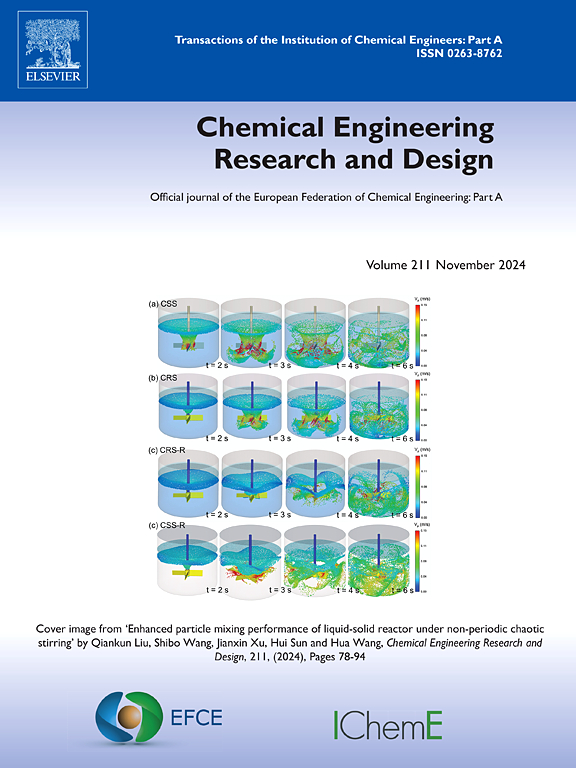Experimental study of volatile iodine retention by pool scrubbing: Influence of operating conditions
IF 3.7
3区 工程技术
Q2 ENGINEERING, CHEMICAL
引用次数: 0
Abstract
In the event of a nuclear power plant accident, iodine is one of the radionuclides of the greatest issue. Present in various chemical forms, the mitigation of outside releases is a crucial aspect of nuclear safety protection measures during a nuclear accident as these airborne iodine releases pose a significant radiological risk to the exposed population in the short term. Pool scrubbing device is one mean of mitigation. Tests were conducted on to study the scrubbing efficiency in a water pool of volatile iodine species: methyl iodide (CH3I) and molecular iodine (I2). This allows us to determine a Decontamination Factor (DF) for each gaseous species, characterizing its trapping capability. The influence of various physical and chemical factors on the trapping was investigated, the experimental parameters were the gas flow regime, pool’s pH, and pool’s temperature. The retention of CH3I by pool scrubbing was unaffected by the flow regime and pool chemical conditions in contrast to I2. Pool scrubbing appears to be an efficient mean to mitigate I2 releases for bubbly regime and alkaline conditions whereas for CH3I, due to its too high volatility, the retention efficiency remains quite low and cannot be considered as an effective mitigation mean.
洗涤池中挥发性碘残留的实验研究:操作条件的影响
一旦核电站发生事故,碘是放射性核素中最大的问题之一。在核事故期间,减缓外部释放以各种化学形式存在,是核安全保护措施的一个关键方面,因为这些通过空气传播的碘释放在短期内对受照射人群构成重大的辐射风险。泳池洗涤装置是一种缓解措施。对挥发性碘:甲基碘(CH3I)和分子碘(I2)的洗涤效果进行了试验研究。这使我们能够确定每个气体物种的净化因子(DF),表征其捕获能力。研究了各种物理和化学因素对捕集的影响,实验参数为气体流动方式、池内pH值和池内温度。与I2相比,池擦洗对CH3I的保留不受流动形式和池化学条件的影响。池洗涤似乎是减少气泡状态和碱性条件下I2释放的有效手段,而对于CH3I,由于其挥发性太高,保留效率仍然很低,不能被视为有效的缓解手段。
本文章由计算机程序翻译,如有差异,请以英文原文为准。
求助全文
约1分钟内获得全文
求助全文
来源期刊

Chemical Engineering Research & Design
工程技术-工程:化工
CiteScore
6.10
自引率
7.70%
发文量
623
审稿时长
42 days
期刊介绍:
ChERD aims to be the principal international journal for publication of high quality, original papers in chemical engineering.
Papers showing how research results can be used in chemical engineering design, and accounts of experimental or theoretical research work bringing new perspectives to established principles, highlighting unsolved problems or indicating directions for future research, are particularly welcome. Contributions that deal with new developments in plant or processes and that can be given quantitative expression are encouraged. The journal is especially interested in papers that extend the boundaries of traditional chemical engineering.
 求助内容:
求助内容: 应助结果提醒方式:
应助结果提醒方式:


